Wilson, North Carolina, population 47,000 and some, is a former tobacco town that is striving to revitalize itself for the 21st century. Empty storefronts pockmark the downtown, most seemingly frozen in the 1950s. Huge, block-long, brick tobacco warehouses stand abandoned, waiting for some creative reuse. The predominantly Black neighborhood is literally on the other side of the railroad tracks.
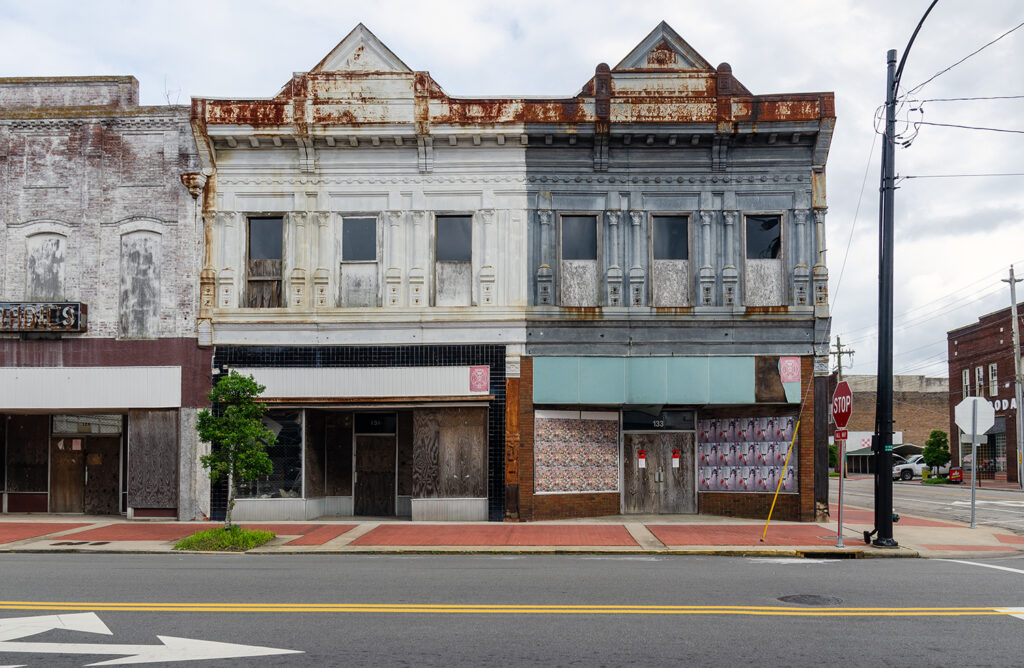

Yet most people are warm and friendly and there is a kind of natural ease in interactions between Black and white that is often missing in large northern cities where an underlying tension between people who are unfamiliar with each other colors casual conversations. People of all races and ages seem rather proud of the festival and glad to have visitors in town. And while I was there, Wilson also celebrated Pride Day, which seemed to be as colorful and joyous as any place in the more liberal North.
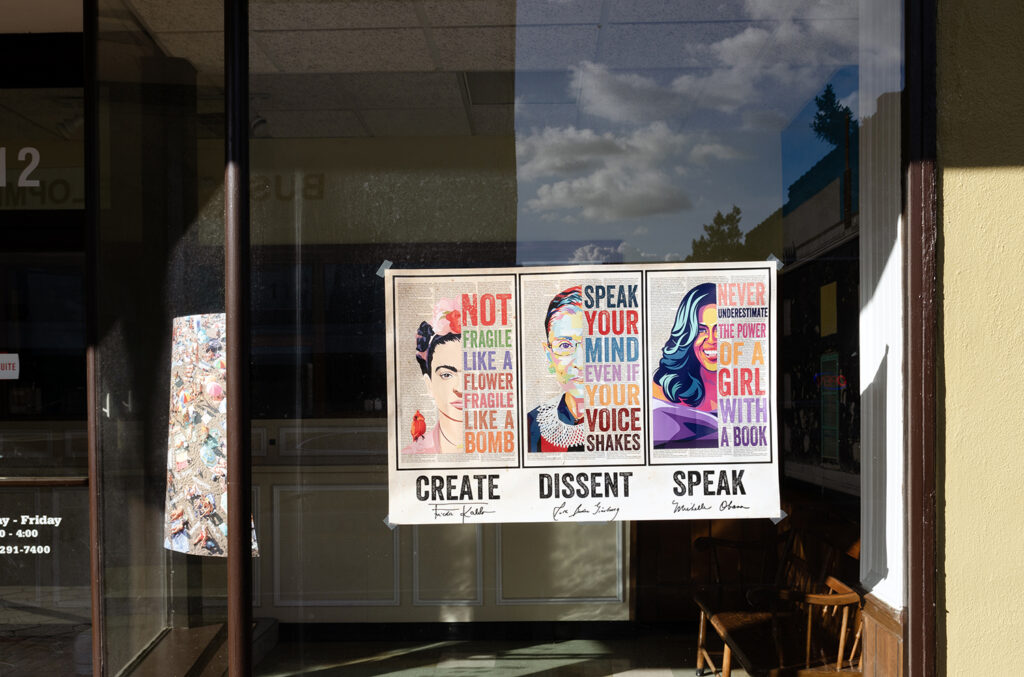
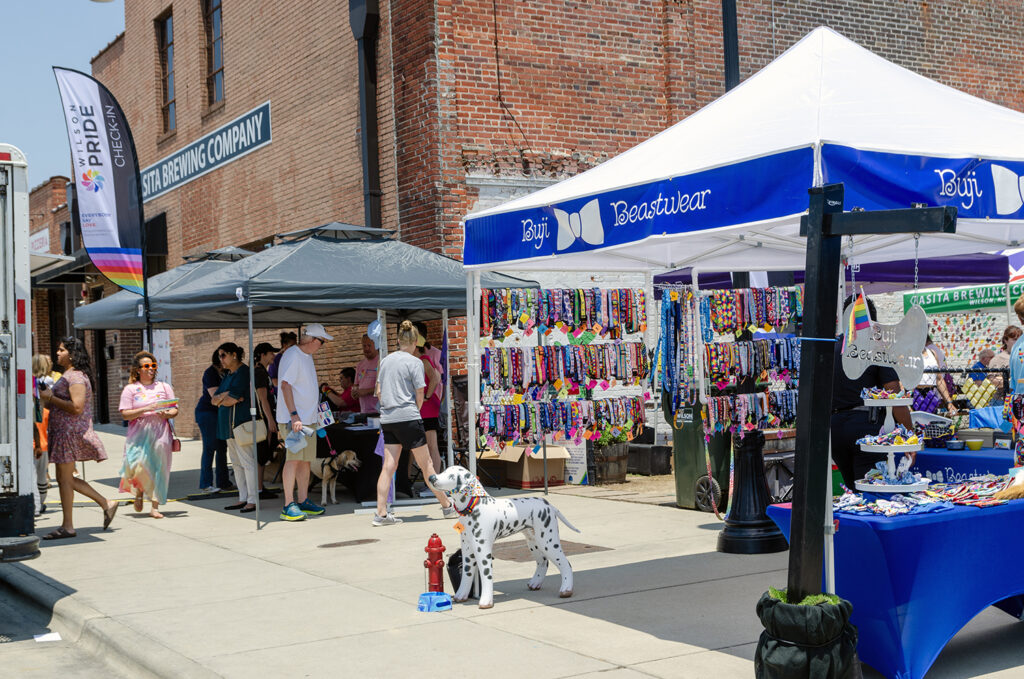
The most famous thing in Wilson is Whirligig Park, a square block with a bandstand in the middle and half the block taken up by gigantic, fantastic, colorful whirligigs, all created by Vollis Simpson. The first night I was there the square was filled with people out to listen to a jazz concert, one of a series of music performances every other week. Food trucks lined the Park in a town with only a handful of small family restaurants.


But the most exciting and unexpected thing in Wilson is the Eyes on Main Street photography festival, now in its ninth iteration, and the American Center for Photographers (ACP), which opened for the first time Thursday evening, June 1, with a pretty large crowd attending. Both are the brainchild of Jerome De Perlinghi, who immigrated to the United States from Belgium with his wife Rosa and their children in the early 2000s. The festival and the center seem like something that would take a city ten or twenty times as large to support.
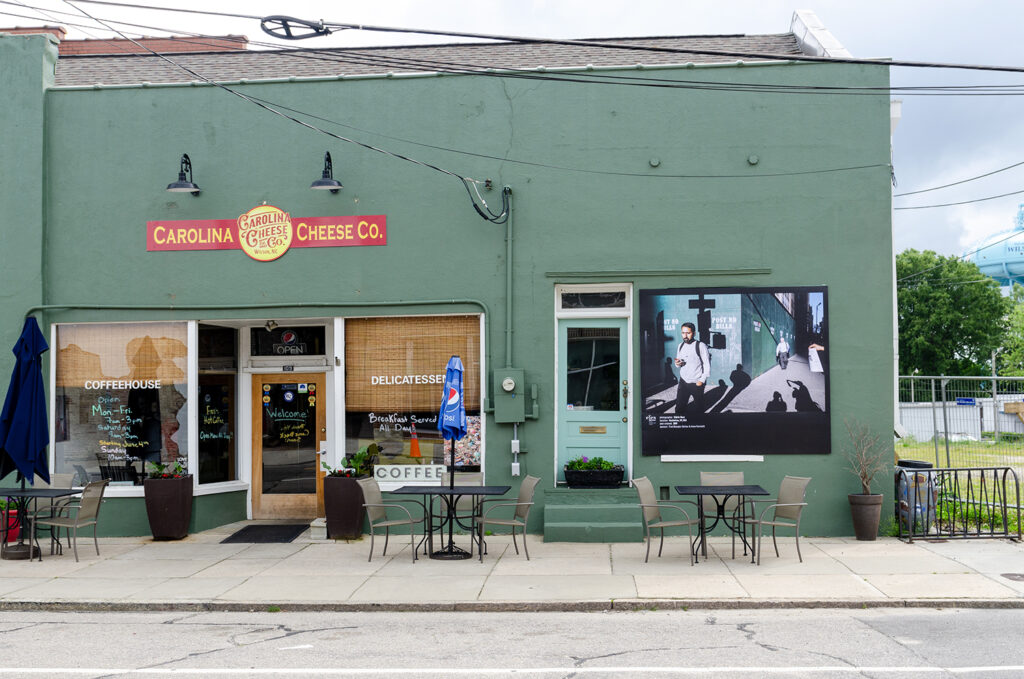
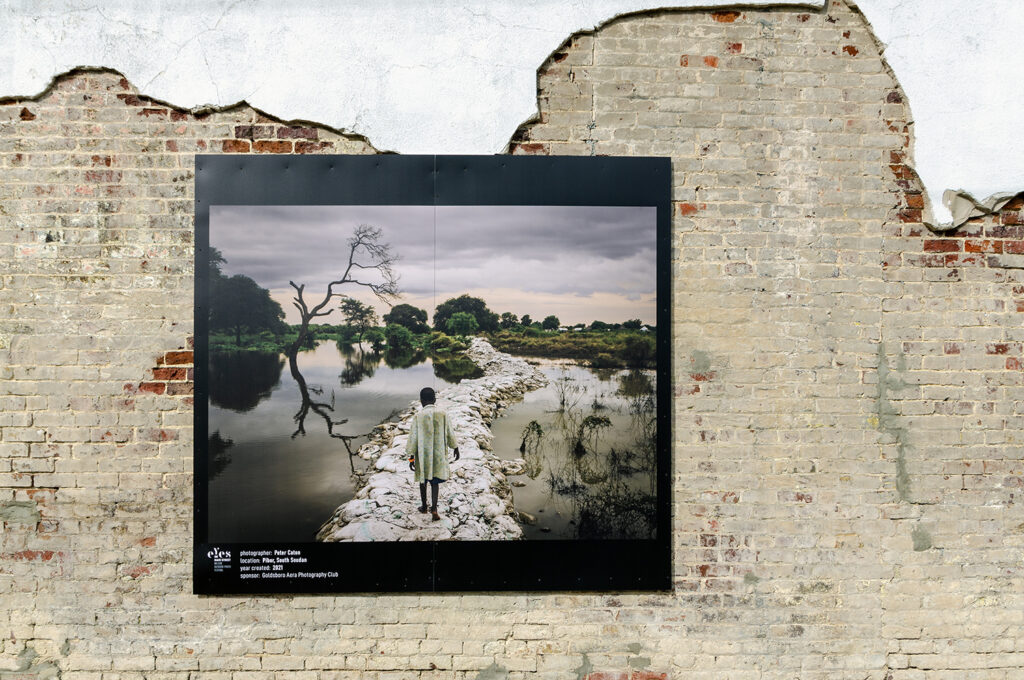
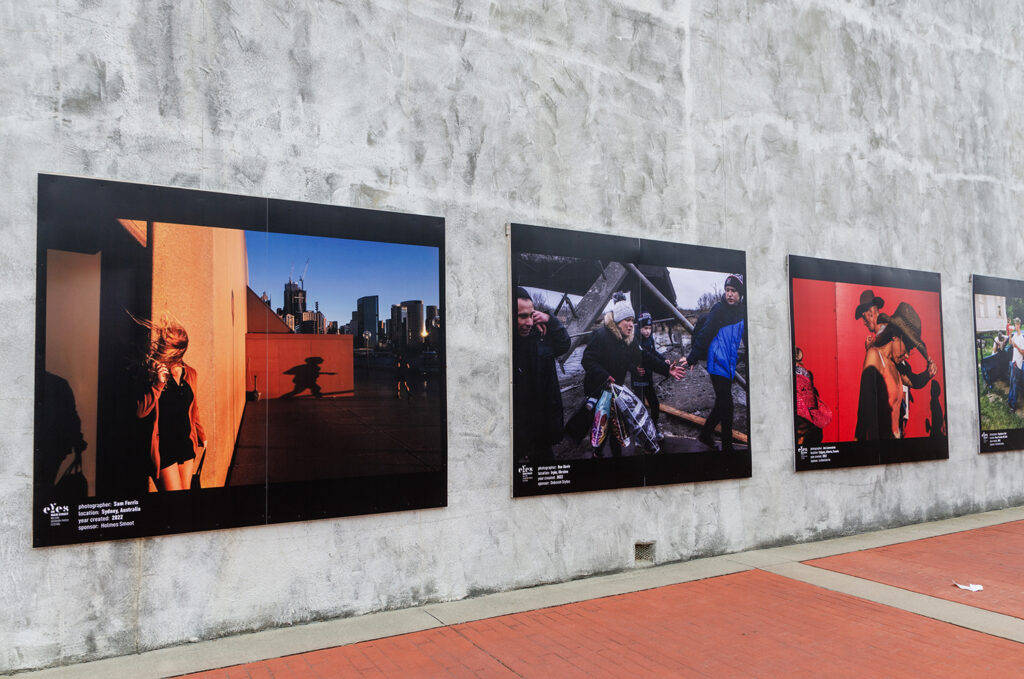
Eyes on Main Street invites 100 photographers from around the world every year. This year 39 countries were represented. The curators, Jerome; Carol Johnson, formerly a photo curator at the Library of Congress now living in Colorado; and Ghadah Alrawi, an American freelance photographer living in Taiwan, select the images, which are enlarged in several sizes from huge to gigantic to colossal, printed on vinyl and mounted to exterior walls and windows of buildings over numerous blocks around town, where they will remain for 100 days. Peter Fitzpatrick, an Australian photographer on the faculty of Columbia College Chicago, serves as education director running their youth programs.
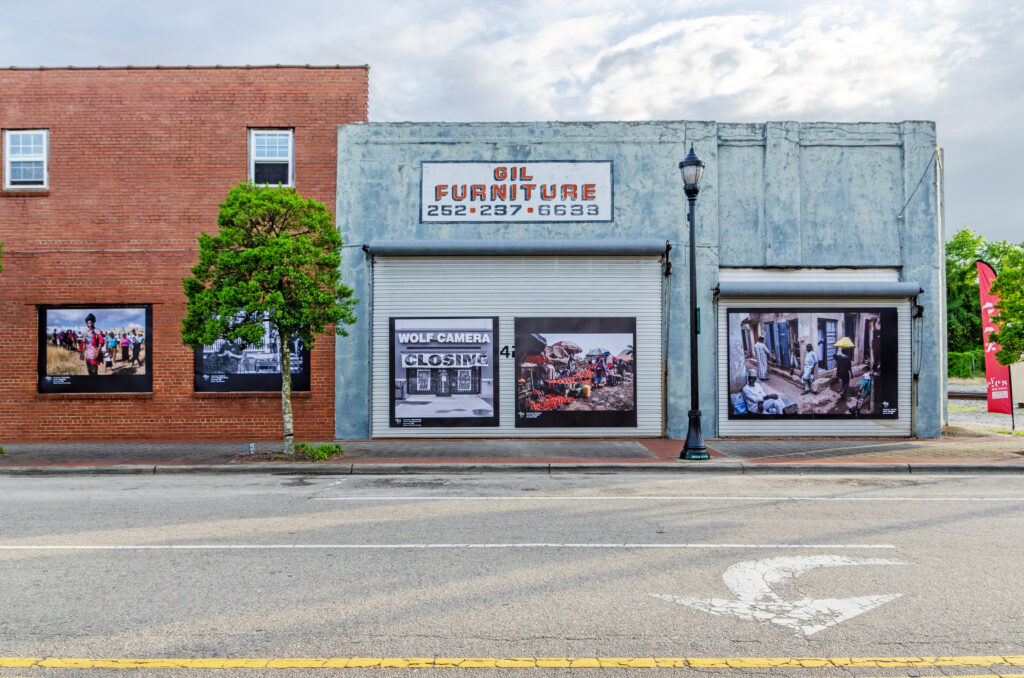
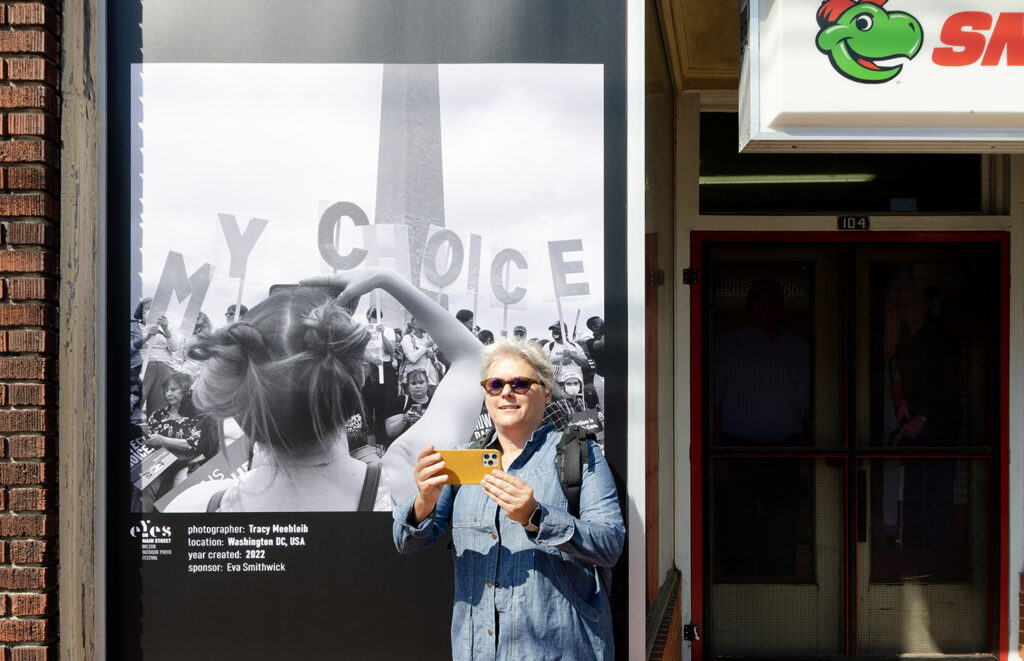
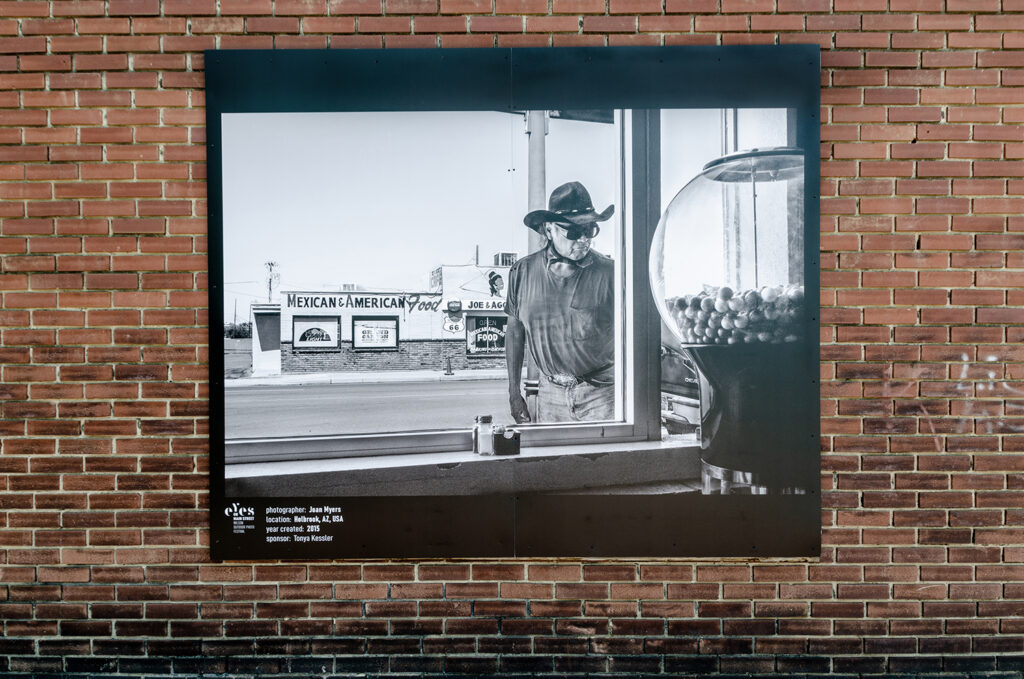
I knew personally two of the other photographers participating, Michael Starkman of San Francisco and Jenna Brereton-Mulhall of Bucks County, Pennsylvania. I was gratified to learn that Carol had discovered them through The Photo Review. Another photographer in the show, Rebecca Moseman, was the winner of a Photo Review Competition some years ago. She has gone on to some note, so I’m not sure if The Photo Review was the connection for Carol there.
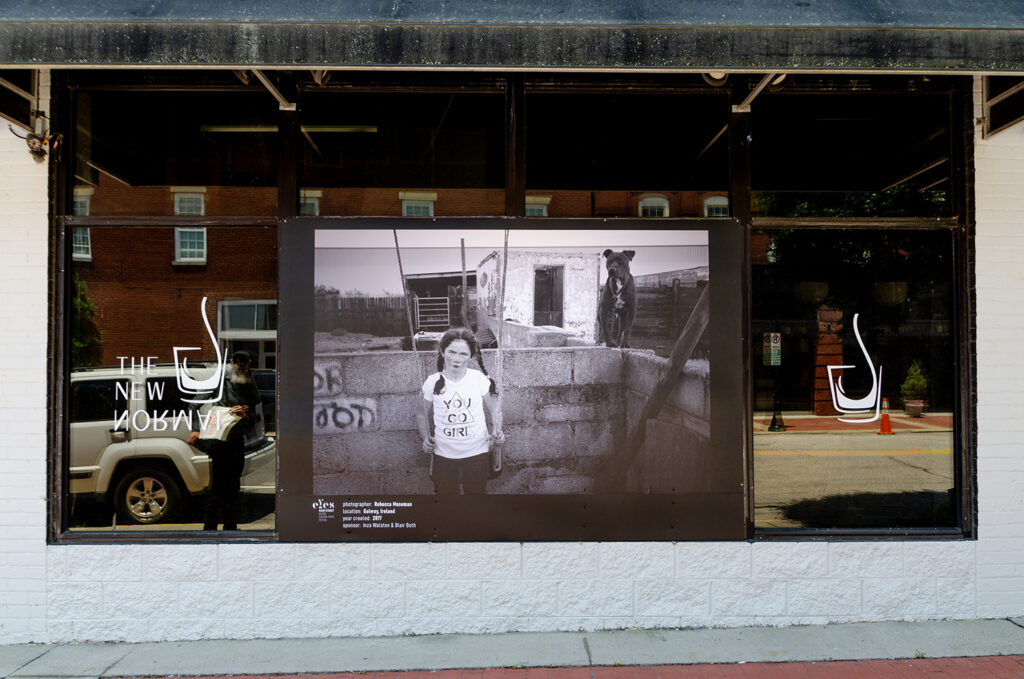
ACP is located in a renovated tobacco warehouse right across the street from Whirligig Park. On the other side of the entrance lobby is the charming Whirligig Museum, showcasing many of Vollis Simpson’s small-scale creations. The main part of the building has been converted to apartments, one of which is used to house the residency fellows, twelve of whom are chosen to spend a month each at different times a year to make photographs in Wilson.
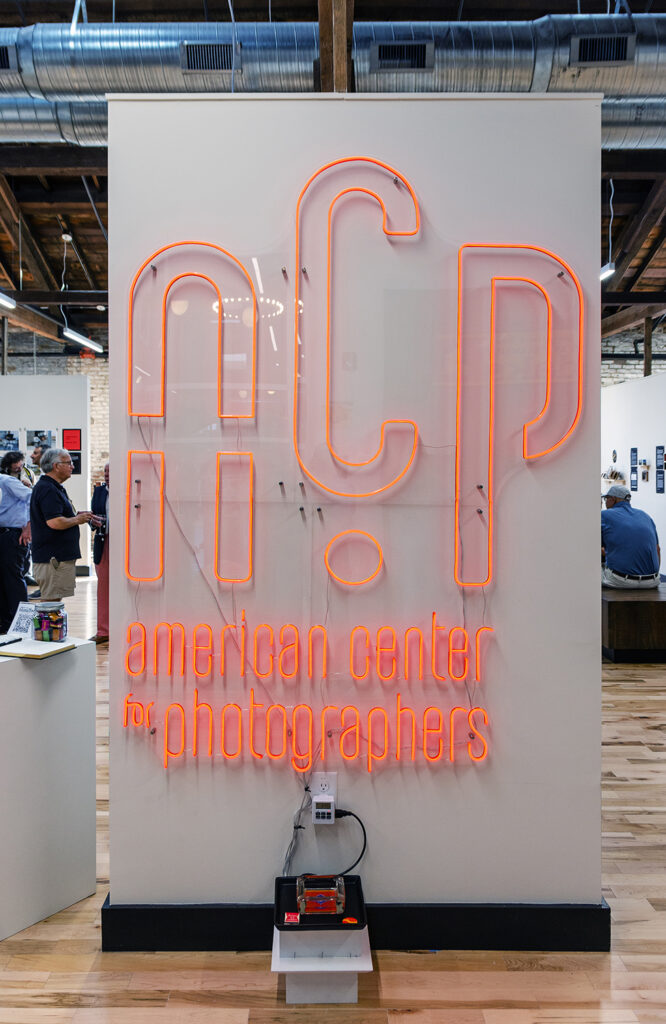
The opening show consisted of photographs by the previous year’s residents, as well as Photo-Reportage grant winner, Rafaella Petralla, who had completed a rather intense project photographing the fallout, as it were, of the Vietnam War in Laos, where unexploded bombs and mines have injured many people over the decades.
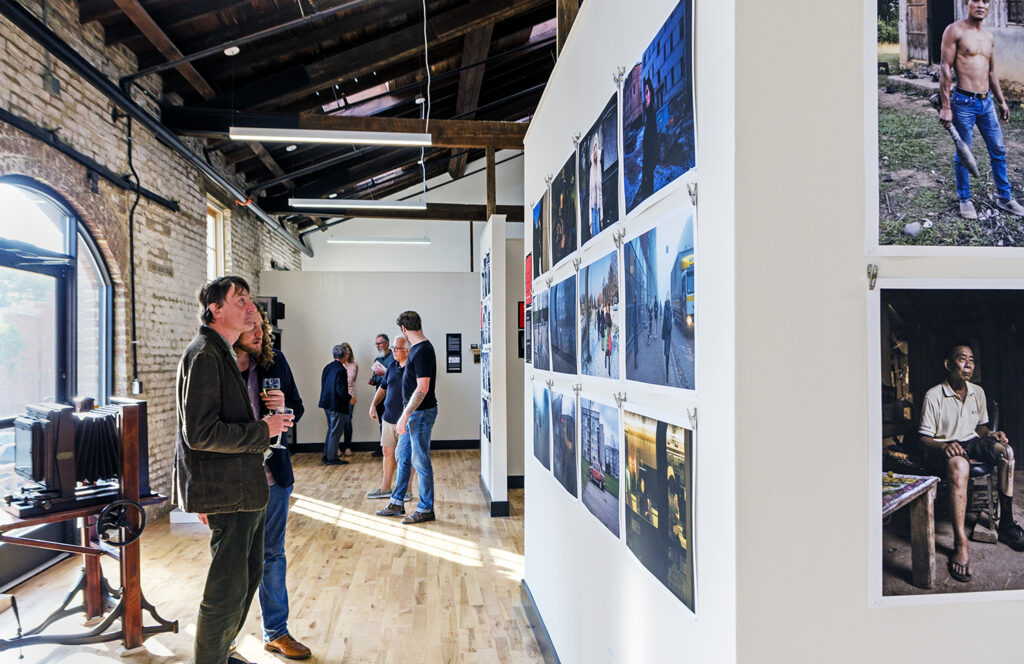
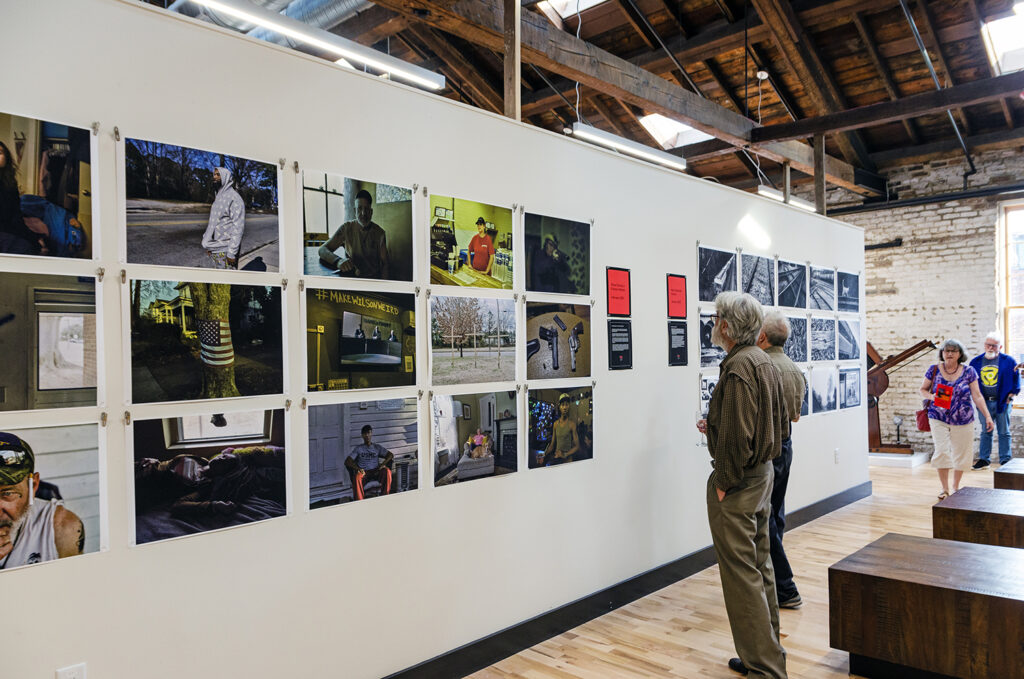
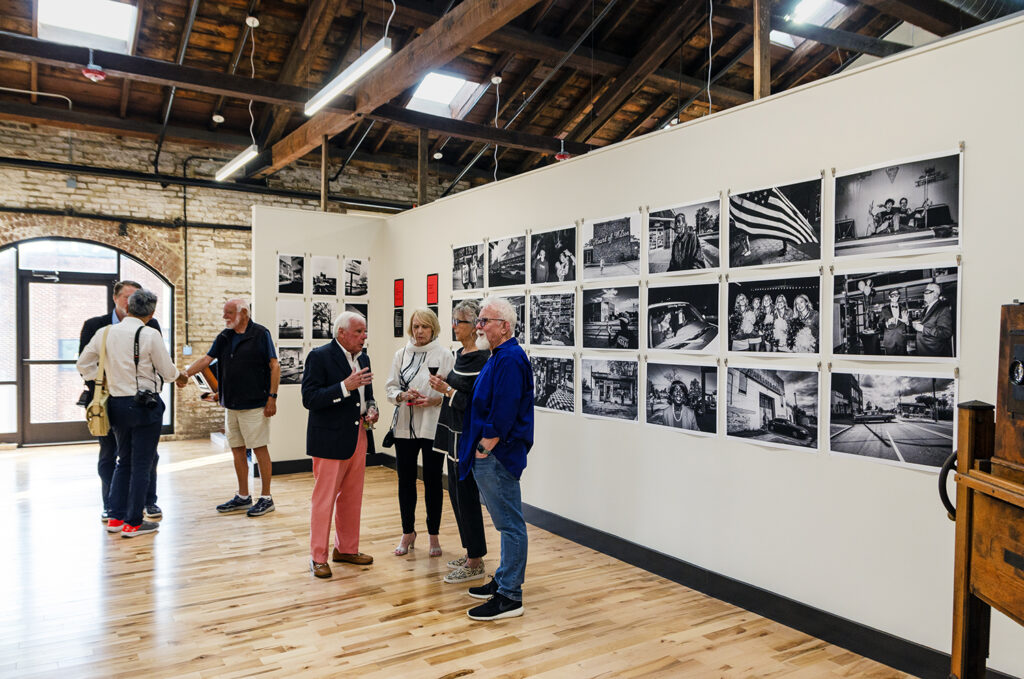
The outside walls of the interior of the center feature part of Jerome’s collection of cameras — including huge, old, wooden studio cameras — advertising signs, Victorian albums, daguerreotypes, tintypes, and cabinet cards. It all lends both an educational and joyful vibe to the gallery.
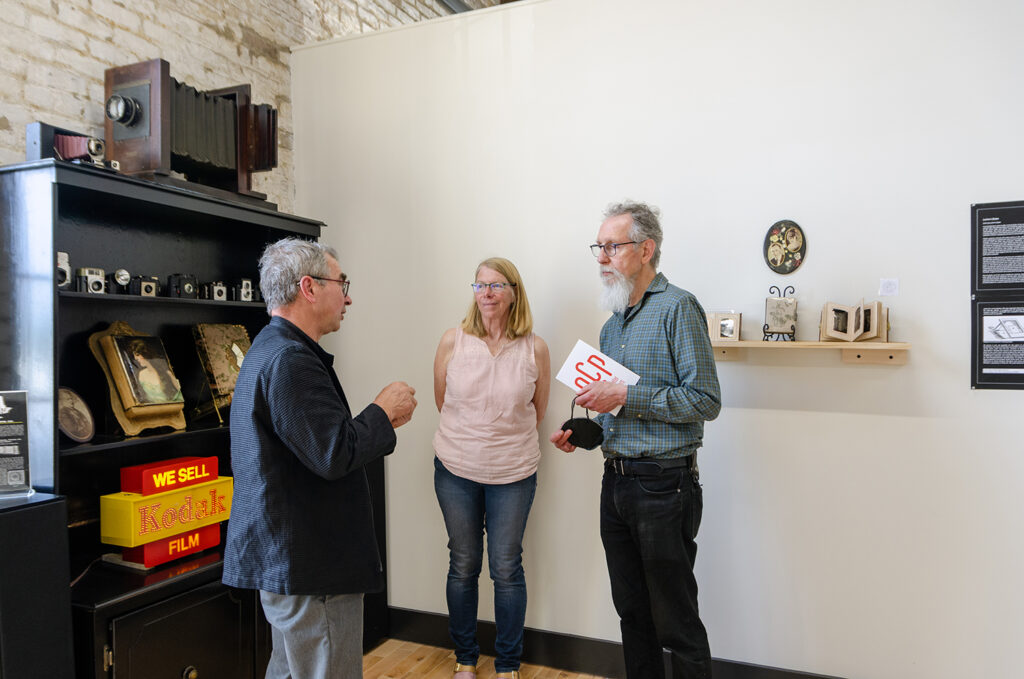
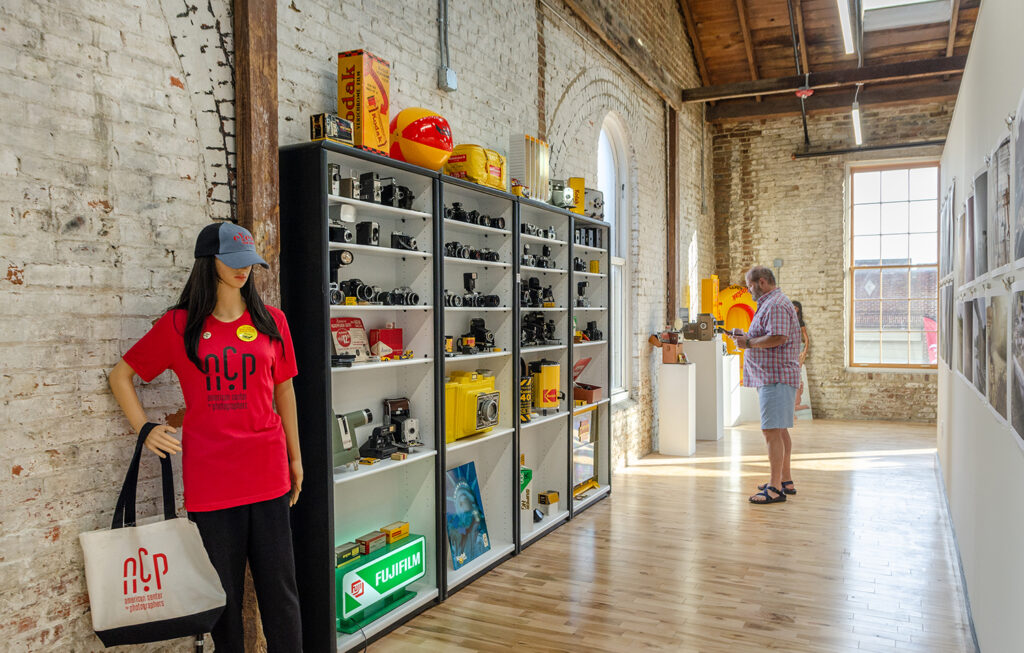
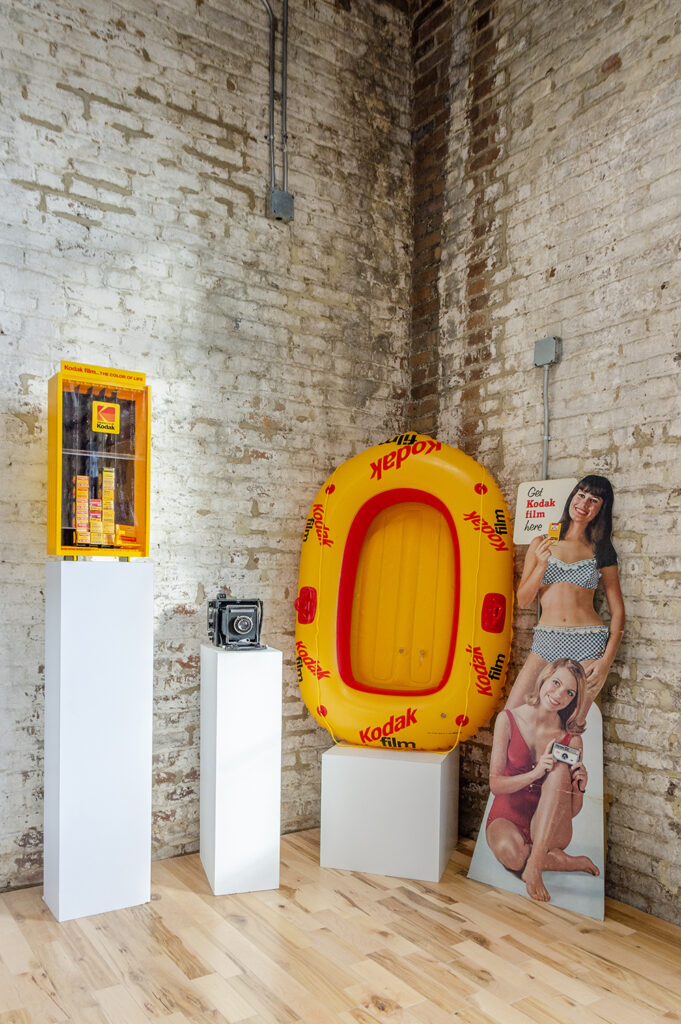
On Saturday there were two lectures at Imagination Station, one by African Grace Ekpu on her photographs of Nigeria, and one by British photographer Peter Caton of his multiyear project on the flooding in South Sudan. You will never complain about the mosquitos in your back yard after you hear his stories of battling them in Africa. Unfortunately I had to leave on Sunday before Rafaella’s talk, but I heard it was powerful.
Later on Saturday afternoon there was an hour-and-a-half walk-through of the exhibition, spread out over many blocks, and attended by a large crowd of 122 people. Led by Jerome, it also allowed for each of the twenty-some photographers attending to speak for a couple of minutes about their work.

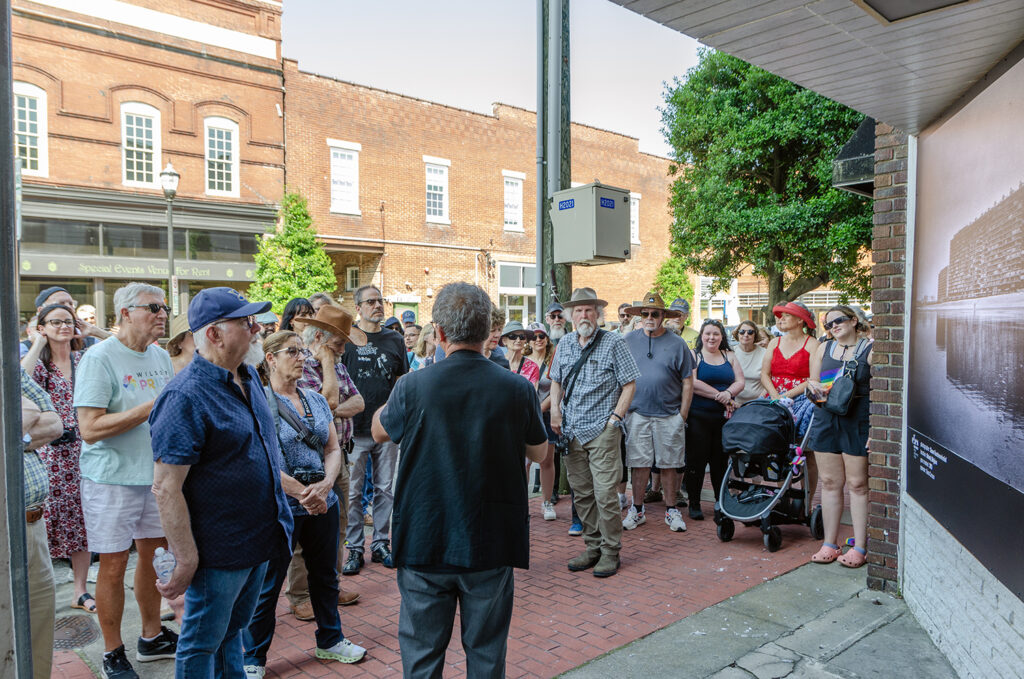
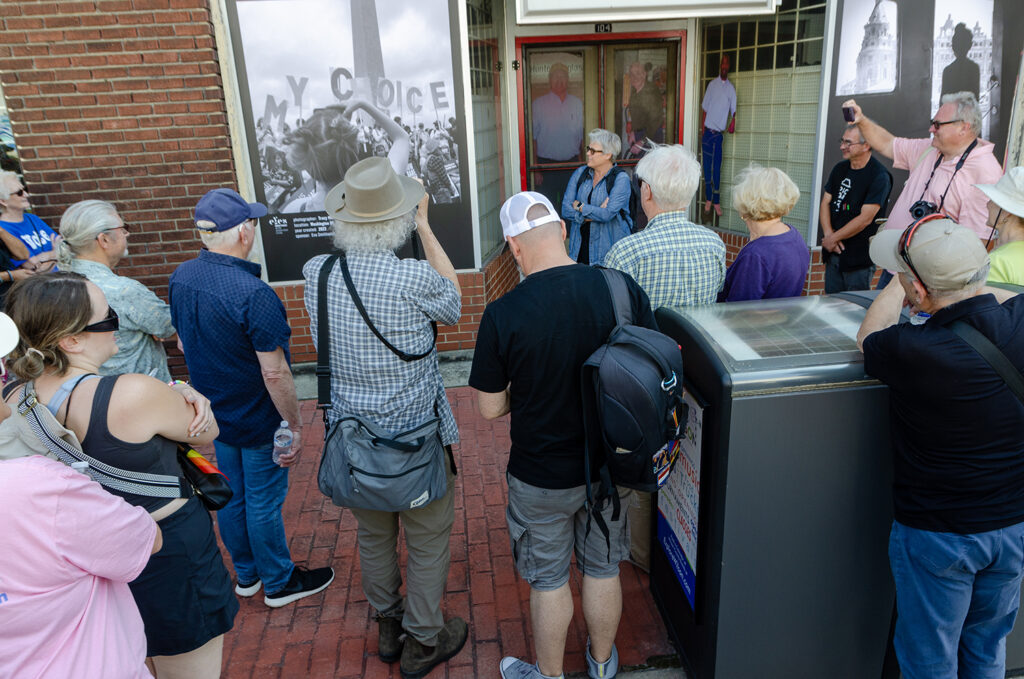
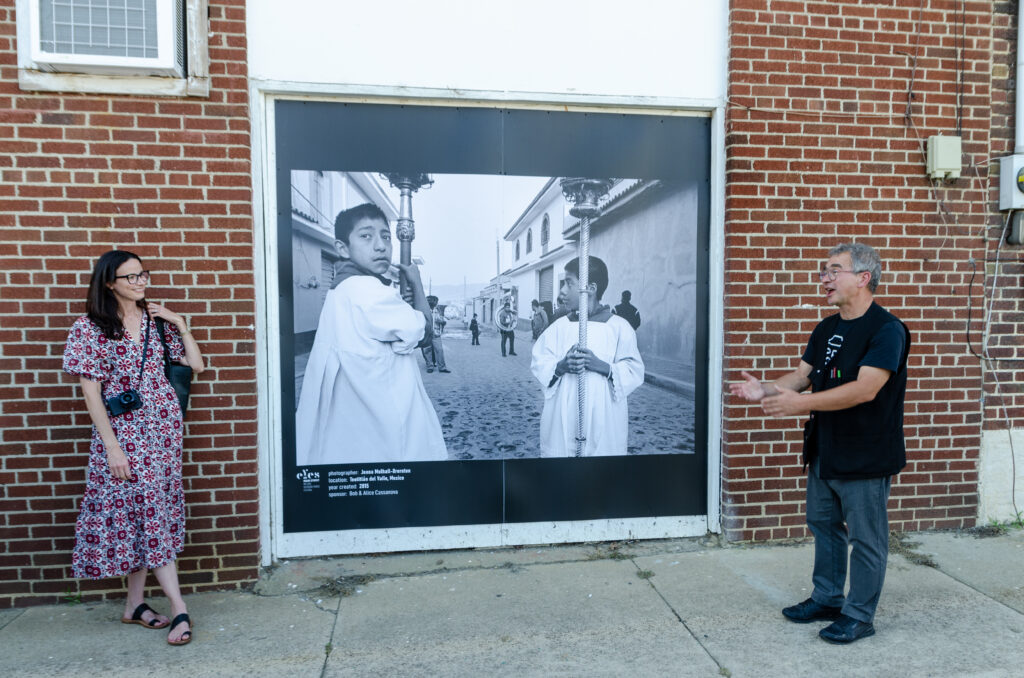
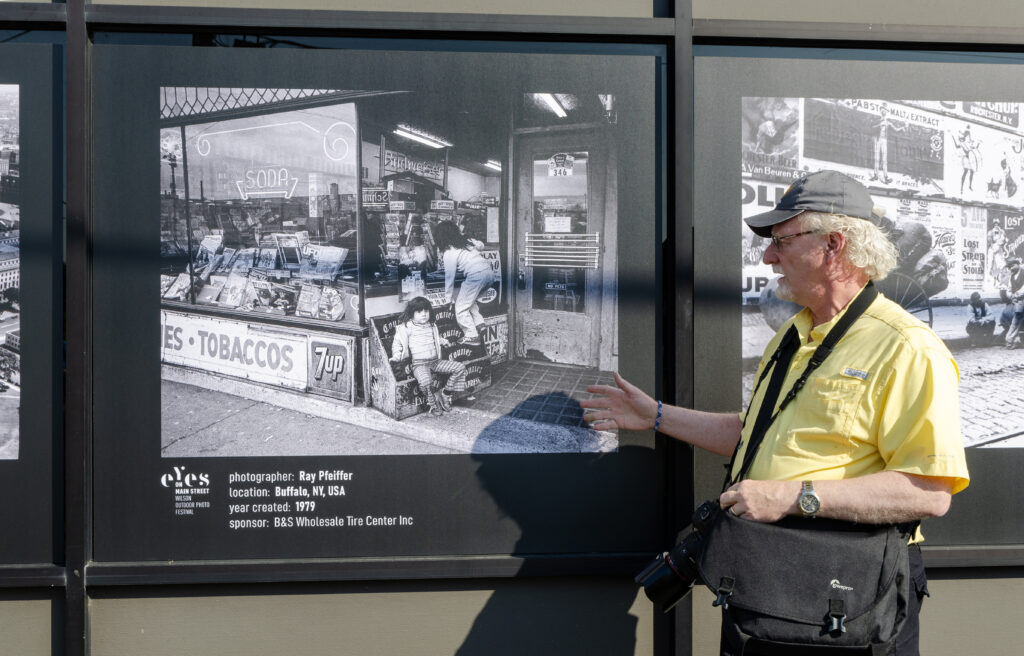
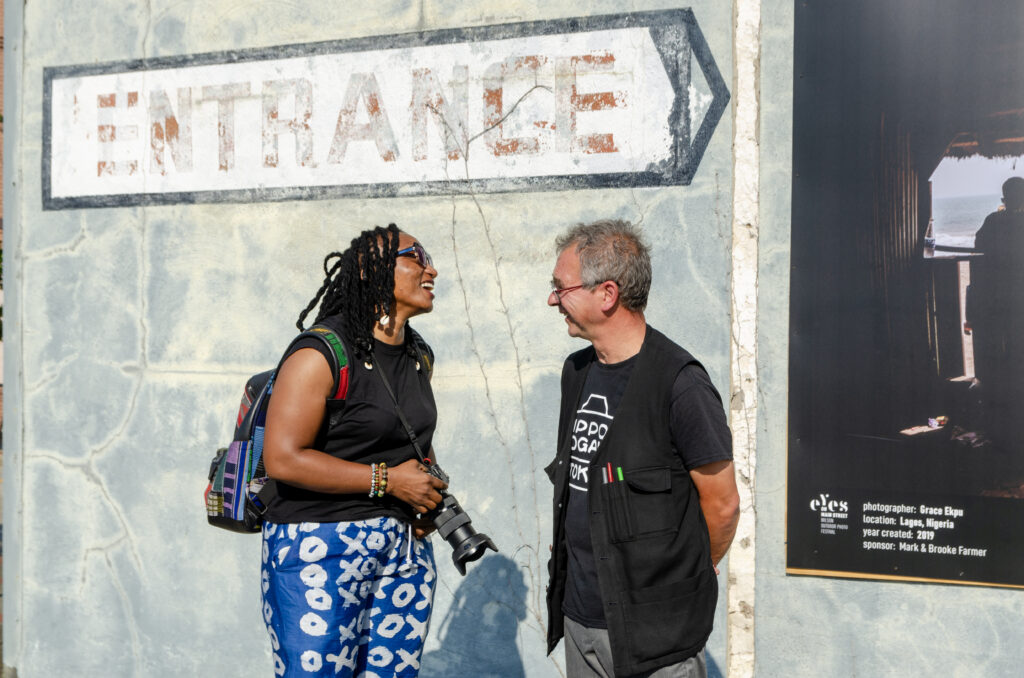
Eyes on Main Street is unique among photo festivals. It is certainly worth a visit, especially on its opening weekend filled with various interesting activities. Perhaps I’ll see you there next year for its tenth iteration.
Stephen Perloff
(All photographs by Stephen Perloff)

